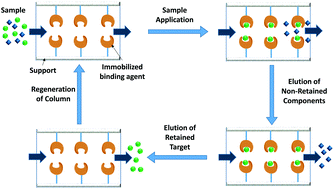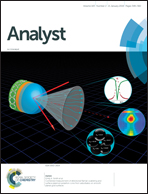High performance affinity chromatography and related separation methods for the analysis of biological and pharmaceutical agents
Abstract
The last few decades have witnessed the development of many high-performance separation methods that use biologically related binding agents. The combination of HPLC with these binding agents results in a technique known as high performance affinity chromatography (HPAC). This review will discuss the general principles of HPAC and related techniques, with an emphasis on their use for the analysis of biological compounds and pharmaceutical agents. Various types of binding agents for these methods will be considered, including antibodies, immunoglobulin-binding proteins, aptamers, enzymes, lectins, transport proteins, lipids, and carbohydrates. Formats that will be discussed for these methods range from the direct detection of an analyte to indirect detection based on chromatographic immunoassays, as well as schemes based on analyte extraction or depletion, post-column detection, and multi-column systems. The use of biological agents in HPLC for chiral separations will also be considered, along with the use of HPAC as a tool to screen or study biological interactions. Various examples will be presented to illustrate these approaches and their applications in fields such as biochemistry, clinical chemistry, and pharmaceutical research.

- This article is part of the themed collection: Recent Review Articles


 Please wait while we load your content...
Please wait while we load your content...